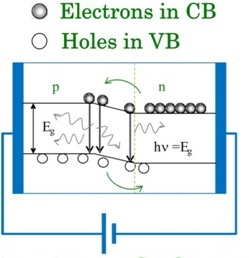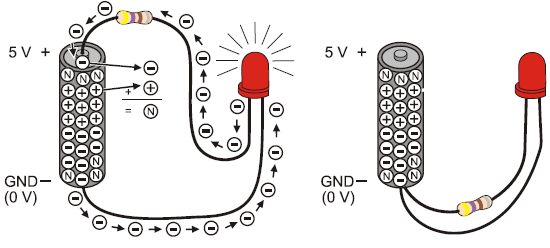LED, or Light Emitting Diode, have revolutionized the world of electronics with their efficiency, durability, and versatility. As a cornerstone of modern electronic devices, LEDs play a vital role in a wide range of applications, from simple indicators in circuits to sophisticated displays in advanced systems. This comprehensive guide delves into the construction, operation, and diverse applications of LEDs, offering valuable insights into their advantages, limitations, and best practices for their use. Whether you’re a beginner or a seasoned professional, this article will equip you with the knowledge needed to harness LED technology in your projects effectively.
Table of Contents
What is an LED?
LED stands for Light Emitting Diode. It is a special type of device that emits light when current flows through it. It primarily operates in forward bias.
This type of diode functions when provided with the necessary voltage in forward bias. Increasing the voltage through it will increase the intensity of the light, but it’s important not to increase the voltage too much, as this can cause it to overheat and be damaged.
This type of diode typically operates between 1 to 2.5 volts. Various types of light can be emitted from an LED, such as red, yellow, green, etc. They are inexpensive and easily available, with extensive use in electronic circuits.
LED Symbol

LED Construction
An LED or Light Emitting Diode has two legs: one is the anode or positive, and the other is the cathode or negative. The anode leg or positive leg is longer than the other.

It is made from special types of semiconductor materials such as gallium, phosphorus, arsenic, etc.
The main part of the LED is a semiconductor chip that primarily forms the P-N junction. The anvil, shown in the diagram, holds this chip. The reflective cavity emits light, which is located at the top of the anvil. Through the reflective cavity, light emission can be directed in one direction by reflection.
A thin metal wire connects the P-type metal contact of the semiconductor chip with the post to ensure that the voltage applied to the anode can be applied to the P-type semiconductor of the diode.
On the opposite side, you will notice that a metal conductor inside the anvil connects with the N-type side, allowing the voltage applied to the cathode to be applied to the N-type semiconductor. The entire system is then covered with a transparent hard plastic.
A terminal is drawn out from the anvil, called the cathode, and another terminal is drawn out from the post, called the anode.
LED Working Principle

We learned from the construction that an LED primarily works in forward bias. The majority carriers in the P-type semiconductor are holes, and in the N-type, they are electrons.
When the Light Emitting Diode is forward biased, the free electrons of the N-type semiconductor gain electrical energy from the DC source and move from the valence band to the conduction band. Under the influence of electric pressure, they flow through the junction and reach the P-type semiconductor.
In the P-type, the majority carriers (holes) reside in the valence band. The incoming electrons move from the conduction band to the valence band and combine with the holes.
As a result, electron-hole recombination occurs, and simultaneously, the electrons release their acquired energy in the form of photons during recombination. This is how the P-N junction primarily becomes a light source.
LED Application in Circuits
When connecting a Light Emitting Diode in a circuit, its positive end should be connected to the positive end of the circuit, and the negative end should be connected to the negative or ground end of the circuit. However, a resistor must be connected in series with it.

If connected in reverse, the LED will not function. Various types of LEDs are available in the market. High-power LEDs that can emit very low to very bright light are now available at low prices.
Where LEDs Are Used
- Used in various electronic meters.
- Used in various digital meters.
- Used in audio systems.
- Used in audio analyzers.
- Used as backlights in monitors.
- Used as indicators in various electronic devices.
- Used in seven-segment displays.
- Used in remote control transmitters or receivers.
- Used in various alphanumeric displays.
Advantages and Disadvantages of Using Light Emitting Diodes
Advantages
- Consumes very little power.
- Light Emitting Diodes are small in size and lightweight.
- Modern LED lights consume less energy and provide more light.
- Generates very little heat.
- It is a long-lasting device.
Disadvantages
- Has a high forward resistance, which makes it unsuitable for use as a rectifier.
Precautions for Using LEDs
- LEDs must be connected with the correct polarity, meaning the anode should be connected to the positive of the source and the cathode to the ground or negative of the source.
- It should be operated at the correct voltage, neither too high nor too low.
- Care must be taken not to apply too much heat during soldering.



